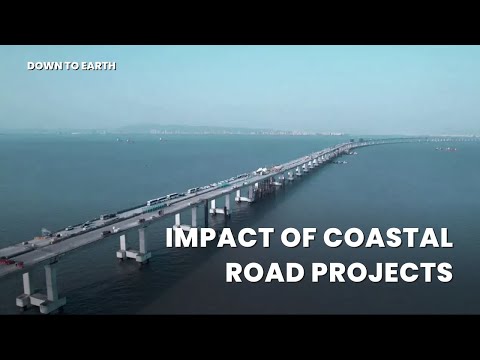Such projects pose a threat to fragile coastal ecosystems and affect livelihoods; most are built on reclaimed land and ignore the eco-sensitive nature of intertidal zones
The Mumbai Coastal Road Project (MCRP) of the Brihanmumbai Municipal Corporation (BMC) connecting north and south Mumbai is expected to cut down the travel time from 40 minutes to 12 minutes. The project comprises of a partly elevated road, a 2.31-kilometre main bridge, a 13-km interchange bridge, a sea wall, and India’s first undersea tunnel.
Coastal road projects are springing up in different parts of India’s coastline. This includes the Gopalpur to Digha Coastal Highway in Odisha and the 625 km coastal highway in Kerala. Both are being built in a move towards improving connectivity and addressing traffic congestion.
But more than that, they pose a threat to fragile coastal ecosystems and affect livelihoods. Most coastal projects, including MCRP, are built on reclaimed land and ignore the eco-sensitive nature of intertidal zones.
The MCRP project threatens existing natural storm drainage patterns and increases the risk of flooding in the city. That is something Mumbai is already struggling with.
It was in December 2015 that an amendment was made to the coastal regulation zone laws by the Union Ministry of Environment, Forest and Climate Change. It allowed for the construction of roads by way of reclamation (creating new land from oceans, rivers, or lakes by filling the area with rock, sand, etc) anywhere along India’s 7,500 km-long coastline without any environmental clearance, apart from “exceptional cases” the definition of which was left undefined.
This was immediately taken up by municipal corporations which were looking to develop infrastructure since coastal lands are not privately owned.
But these coastal road projects cater only to a section of society, those who travel by car or private vehicles. In a city like Mumbai where over 70 per cent of the population walks to work or uses public transport and less than 10 per cent uses private vehicles, this move raises a lot of questions.
The benefits of car-centric infrastructure in lower-income and middle-income cities are far few while the negative impacts like loss of livelihoods and pollution are far more and will be borne more by the low-income populations.
The Rs 12,721 crore road is BMC’s most expensive project yet. Spending thousands of crores on MCRP, for example, could mean forgoing the funds for having an improved and subsidised bus service, constructing a flood-proof stormwater system, or upgrading the entire surface and overhead pedestrian infrastructure.
What is needed is a comprehensive understanding to ascertain how to fund public transport systems rather than building more roads.
We are a voice to you; you have been a support to us. Together we build journalism that is independent, credible and fearless. You can further help us by making a donation. This will mean a lot for our ability to bring you news, perspectives and analysis from the ground so that we can make change together.
















































